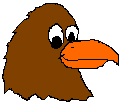Shading
Goal:
The student will demonstrate that
they have learned how to draw the cylinder, sphere and cone
three-dimensionally with each of their respective cast shadows and shade
these in with a light source originating at 45 degrees top left in
crayon using 0% - 100% "black" crayon.
Materials:
9” X 12” newsprint
pencil
crayons
9” X 12” "good white paper"
(computer printer paper)
Steps:
1. Desig
2. Draw a
3. Thicke
4. Color t
5. Transf
6. Once
t
Ideas to keep
in mind are:
Be o
Keep
Kee
Ke
Hi Lauren!!!
Keep
No
ov
No
pe
Gl
Planning carefully and DOING NEAT WORK
gives you art that you may be proud of!
*Don’t forget to put your
first and last
name, then date, and THEN period number on the lower, back, right-hand corner to
EARN your full grade!! Yes, you may spread it out along the outside
margin of the paper in a straight line due to the smallness of the area
that is left. –Mr. Myers
Grading Rubric
for:
Shading and Forms
A This paper exhibits all of what has been asked for. The initial
drawing was done lightly with pencil and all of the structural lines can
be seen if carefully looked for. The subject is drawn full sized on the
paper and the cast shadows are properly made. The form’s shading values
are complete from 0% to 100% black with imperceptible changes visible.
The transition from one form’s shaded to lighted side is similar to that
of the other forms, with each of the form’s shadows changing values from
near to far from. The background is also shaded from 100% to 0% black
and also shows little perceptible change from light to dark. Each of
the forms are complete unto themselves and are matching to the other
forms, which in turn match the background; the entire picture “works
together” to be a project that shows that time was well spent giving a
well done end product fully matching the project’s intended goal of
learning to draw and shade three dimensional forms.
B This paper exhibits good work and one should be proud of it,
however it is not yet completed. Usually there are some small errors in
the initial drawing of the forms, maybe a minor ellipse is off, or maybe
the form isn’t quite large enough. The shading is almost totally
correct. Some small thing might keep this paper from being an “A”,
something such as too little 0% black left, or never quite making it to
100% black. If the transition between values of black are too easily
seen this too could be the reason for “just a B”.
C This project is an “average” job of drawing the forms and has
mostly correctly shaded forms. The shaded values are correctly done for
the most part but probably the forms aren’t quite large enough or maybe
even not entirely done being drawn or shaded. Note that this is a job
that has begun but not been finished. The “C” project needs more work
on it.
D
The picture shows many errors in
judgment by not following the directions sequentially. The structure
that the shading in hung upon is poorly done with the ellipses’ major
and/or minor axes being out of correct proportion. The size of the
forms is not appropriate for the paper’s size. There is a lack of value
contrast between the 100% and 0% black. The student did NOT give up
though, Hooray!!
Fail
A “Failed” picture shows many of the following traits but the best way
to see why it fails is that the directions were not followed and
the student did not correct the errors though enough time was given to
do so remembering too that the teacher’s assistance was not followed.
The structure or foundation, is wrong. Ellipses’ major and/or minor
axes are off. The shading values do NOT go smoothly from 100% black
to 0% black. The picture was built out of order in that the
suggested sequence was not followed. The entire background and/or forms
were “colored” and not shaded. Time was NOT wisely spent. The size of
the form(s) may be way off. All of the problems that a failing picture
exhibits could have been solved by following the directions beginning
with “first things first”.
One may always re-do any project for another chance at
success for as long as school is in session! Good Luck and remember
that I will be happy to assist after school.
back to top
Updated 17 October 2008 |
